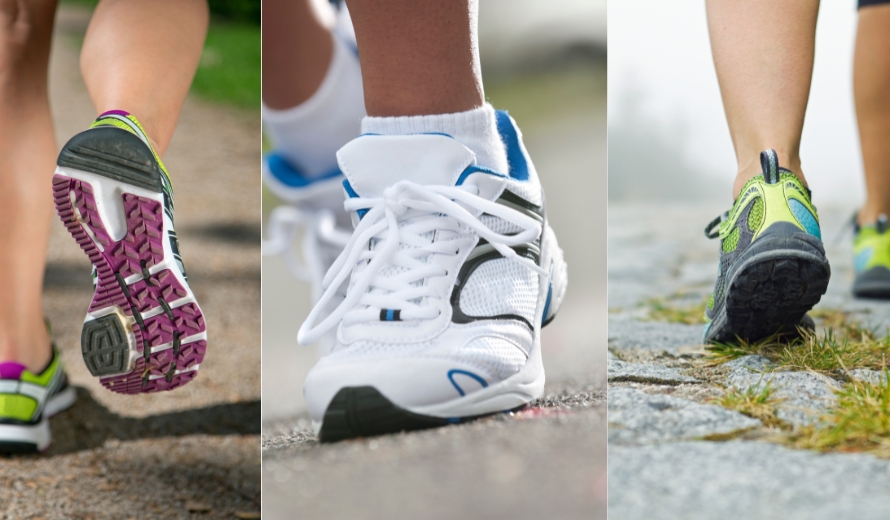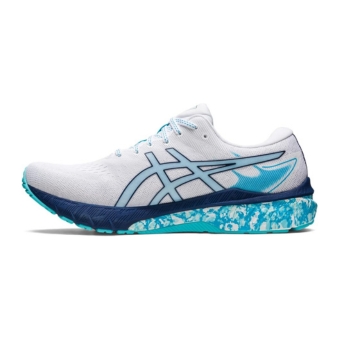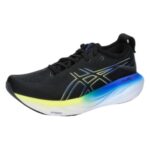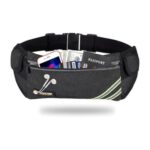When choosing comfortable running shoes, cushioning is very important. Good cushioning in running shoes helps absorb impact and reduce stress on your joints when running. This makes running more comfortable and reduces the risk of injuries from repetitive strain on your feet, knees, and hips. It’s essential for runners at all levels to have running shoes with enough cushioning for a better and injury-free experience. The right cushioning can significantly improve your performance, allowing you to run longer without discomfort. Proper cushioning can also make your running more efficient by giving you a responsive base that helps you move forward with each step. It’s important to find the right balance between support and comfort when choosing running shoes that suit your needs on the road or trail.
Table of Contents
Understanding cushioning technology in shoes

Understanding cushioning technology in shoes goes beyond just thickness and softness. Different brands and models use various materials and construction methods to provide cushioning, each with its unique benefits. From traditional EVA foam to high-tech materials like Nike’s ZoomX foam or Adidas’ Boost technology, there is a wide range of options available on the market.
One key aspect to consider is how well the cushioning absorbs impact forces during running or walking. Some technologies focus on energy return, providing a springy feel that can help propel you forward with each stride. Others prioritize shock absorption, reducing the strain on your joints and muscles. Understanding your specific needs as a runner can help you choose the right shoe with the optimal cushioning technology for maximum comfort and performance.
By delving deeper into the science behind cushioning technology in shoes, runners can make more informed decisions when selecting their next pair of shoes. Testing out different brands and models to see how each one feels underfoot can also provide valuable insights into which type of cushioning works best for you personally. Instead of simply going by what looks comfortable or trendy, take the time to understand how each type of cushioning material functions to find your ideal match for a comfortable and enjoyable running experience.
Factors to consider for optimal cushioning

When considering optimal cushioning in running shoes, it’s essential to understand that not all cushioning systems are created equal. Factors such as the type of foam used, the thickness of the midsole, and the placement of the cushioning can significantly impact comfort and support. Look for shoes with responsive cushioning that returns energy with each stride, providing a springy feel while also absorbing impact forces to reduce strain on your joints. Additionally, consider your individual preferences and running style; some runners may prefer a firmer cushion for more stability, while others enjoy a plush feeling for long-distance comfort.
Another crucial factor to consider is the durability of the cushioning material – high-quality foam and gel compounds retain their shape and performance over time, ensuring consistent support throughout the lifespan of your shoes. A good rule of thumb is to assess how well the cushioning maintains its responsiveness after extended use; this can be indicative of its longevity and ability to keep you comfortable mile after mile. Lastly, take into account factors like weight distribution and foot strike patterns when selecting running shoes with optimal cushioning – a tailored approach can improve overall performance and prevent common injuries associated with inadequate support.
Testing shoes for comfort and support

When it comes to testing shoes for comfort and support, one cannot overlook the importance of feeling every inch of material against your skin. It’s not just about how cushioned a shoe appears to be but also how it hugs your arches and supports your heels. Take the time to walk around in the shoes, paying attention to any areas that rub or feel uncomfortable. A shoe that feels great in the store may reveal discomfort after a longer wear.
Comfort is subjective, making it crucial to test shoes based on your individual needs and preferences. Consider the type of activities you will be engaging in while wearing these shoes – whether it’s running, walking, or standing for long periods. Look at elements like heel height, arch support, and overall fit as determining factors for comfort and support rather than simply relying on brand reputation or aesthetics alone. Testing different options with an open mind can lead you to finding the perfect balance between cushioning and support within your footwear arsenal.
Tips for finding the right cushioning in running shoes

When it comes to finding the perfect cushioned shoe, it’s essential to consider the type of activity you’ll be engaging in. For runners, look for shoes with ample cushioning in the heel and midfoot areas to absorb impact and provide support during each stride. Additionally, pay attention to the materials used in the cushioning to ensure they offer both comfort and durability.
Another crucial aspect to consider is the shape and size of your feet. Everyone’s feet are different, so finding a shoe that matches your foot shape can make a world of difference in terms of comfort and performance. Don’t forget to try on different brands and styles to see which one feels best for your unique foot shape and arch support needs. By taking these considerations into account, you can find the right cushioned shoe that not only feels great but also supports you during your activities.
Benefits of proper cushioning in running shoes

Proper cushioning in running shoes offers a range of benefits that contribute to both comfort and performance. Beyond providing a soft landing for each step, adequate cushioning helps to absorb impact forces, reducing the strain on joints and muscles during running. This can result in lower risk of injuries such as stress fractures or tendonitis, allowing runners to push their limits without compromising their physical well-being.
Moreover, the right amount of cushioning can enhance energy return, propelling each stride forward with efficiency. By optimizing the balance between comfort and responsiveness, runners can maintain better form and sustain endurance throughout longer distances. Ultimately, investing in running shoes with proper cushioning is not just about adding a layer of padding – it’s about unlocking your full potential as a runner and experiencing the joy of effortless movement.
Conclusion: Comfortable cushioned shoes enhance running experience
In conclusion, investing in comfortable cushioned shoes can truly transform your running experience, taking it to new heights of comfort and performance. The right amount of padding and support can have a significant impact on reducing strain on your body, allowing you to run longer and stronger. With each stride, cushioned shoes offer a soft landing that enhances the overall enjoyment of your run. By promoting proper foot alignment and balance, cushioning can improve stability and agility during runs, boosting your confidence on the track or trail. So don’t wait any longer – prioritize comfort and find the perfect cushioning technology for your needs to unlock the full potential of your running journey!


















